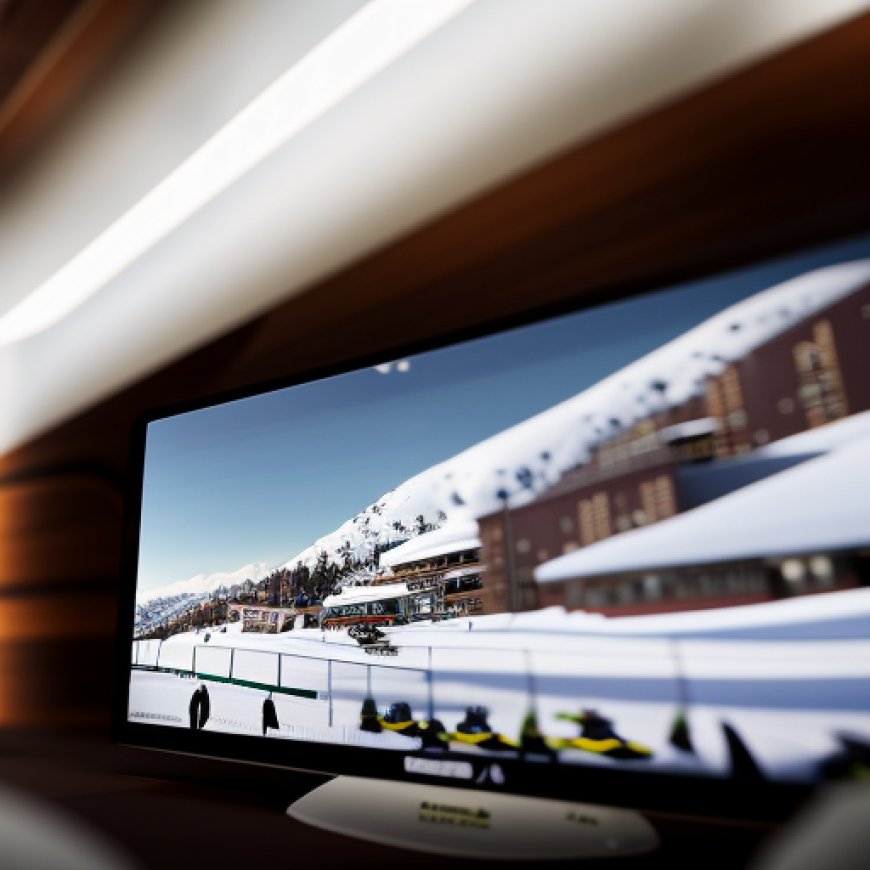Oasi Zegna Ski Racing Center Becomes Official Training Site for Italy’s Ski Teams


The Link Between Fashion and Sports Strengthens: Oasi Zegna Ski Racing Center Signs Agreement with FISI
The Oasi Zegna Ski Racing Center has recently signed a two-year agreement with the Federazione Italiana Sport Invernali (FISI), the Italian Winter Sports Federation. This agreement establishes the ski center, located in Bielmonte, as an official training site for the FISI teams. The center, situated just 20 minutes away from Trivero where the Ermenegildo Zegna Group is based, aims to promote the values of sport and support sporting excellence. This partnership is a significant step towards achieving the Sustainable Development Goals (SDGs) outlined by the United Nations, particularly Goal 3: Good Health and Well-being, and Goal 17: Partnerships for the Goals.
Training Facilities and Slopes
The Oasi Zegna Ski Racing Center, located at 1,500 meters above sea level, offers various training facilities and slopes certified by the International Ski and Snowboard Federation (FIS). The center includes the Bielmonte slope, featuring three special slalom (SL) lines with a gradient of 27 percent and a vertical drop of 130 meters, and the Moncerchio slope, which has two giant slalom (GS) lines with a gradient of 29 percent and a vertical drop of 234 meters.
Partners and Sponsors
The Oasi Zegna Ski Racing Center has garnered support from various partners and sponsors. These include Intesa Sanpaolo through the IMI Corporate & Investment Banking Division, ski equipment brand Nordica, eyewear firm Marcolin, and San Martino2 of Novara, a key shopping center in Piedmont and part of the SCC Group. The center has also partnered with premium beverage brand Lauretana. These collaborations contribute to the achievement of Goal 17: Partnerships for the Goals.
2026 Winter Olympics
Italy, particularly the cities of Milan and Cortina, is preparing for the 2026 Winter Olympics. The Oasi Zegna Ski Racing Center’s agreement with FISI will provide optimal training conditions for Italian athletes, especially during the central part of the season. This partnership aligns with Goal 3: Good Health and Well-being, as it supports the development and training of athletes for international competitions.
The Zegna Family and Oasi Zegna
The Zegna family, owners of the Hotel Bucaneve in Bielmonte, have played a significant role in the development of the Oasi Zegna. The hotel, surrounded by rhododendrons and half a million pine trees planted by Ermenegildo Zegna, offers stunning views of the Alps and overlooks the river Po Valley. The Oasi Zegna, spanning more than 62 miles, serves as a source of inspiration for artistic director Alessandro Sartori. This sustainable territory has also been the venue for some of Zegna’s fashion shows.
Conclusion
The partnership between the Oasi Zegna Ski Racing Center and FISI highlights the growing connection between fashion and sports. This collaboration not only supports the development and training of professional skiers but also promotes the values of sport and the territory. By aligning with the Sustainable Development Goals, this agreement contributes to the overall well-being and sustainable development of the community.
SDGs, Targets, and Indicators
1. SDGs Addressed or Connected to the Issues Highlighted in the Article
- SDG 8: Decent Work and Economic Growth
- SDG 9: Industry, Innovation, and Infrastructure
- SDG 11: Sustainable Cities and Communities
- SDG 17: Partnerships for the Goals
2. Specific Targets Based on the Article’s Content
- SDG 8.5: By 2030, achieve full and productive employment and decent work for all women and men, including for young people and persons with disabilities, and equal pay for work of equal value.
- SDG 9.1: Develop quality, reliable, sustainable, and resilient infrastructure, including regional and transborder infrastructure, to support economic development and human well-being, with a focus on affordable and equitable access for all.
- SDG 11.4: Strengthen efforts to protect and safeguard the world’s cultural and natural heritage.
- SDG 17.17: Encourage and promote effective public, public-private, and civil society partnerships, building on the experience and resourcing strategies of partnerships.
3. Indicators Mentioned or Implied in the Article
- Indicator 8.5.1: Average hourly earnings of female and male employees, by occupation, age group, and persons with disabilities.
- Indicator 9.1.1: Proportion of the rural population who live within 2 km of an all-season road.
- Indicator 11.4.1: Total expenditure (public and private) per capita spent on the preservation, protection, and conservation of all cultural and natural heritage.
- Indicator 17.17.1: Amount of United States dollars committed to public-private and civil society partnerships.
Table: SDGs, Targets, and Indicators
| SDGs | Targets | Indicators |
|---|---|---|
| SDG 8: Decent Work and Economic Growth | Target 8.5: By 2030, achieve full and productive employment and decent work for all women and men, including for young people and persons with disabilities, and equal pay for work of equal value. | Indicator 8.5.1: Average hourly earnings of female and male employees, by occupation, age group, and persons with disabilities. |
| SDG 9: Industry, Innovation, and Infrastructure | Target 9.1: Develop quality, reliable, sustainable, and resilient infrastructure, including regional and transborder infrastructure, to support economic development and human well-being, with a focus on affordable and equitable access for all. | Indicator 9.1.1: Proportion of the rural population who live within 2 km of an all-season road. |
| SDG 11: Sustainable Cities and Communities | Target 11.4: Strengthen efforts to protect and safeguard the world’s cultural and natural heritage. | Indicator 11.4.1: Total expenditure (public and private) per capita spent on the preservation, protection, and conservation of all cultural and natural heritage. |
| SDG 17: Partnerships for the Goals | Target 17.17: Encourage and promote effective public, public-private, and civil society partnerships, building on the experience and resourcing strategies of partnerships. | Indicator 17.17.1: Amount of United States dollars committed to public-private and civil society partnerships. |
Source: wwd.com








